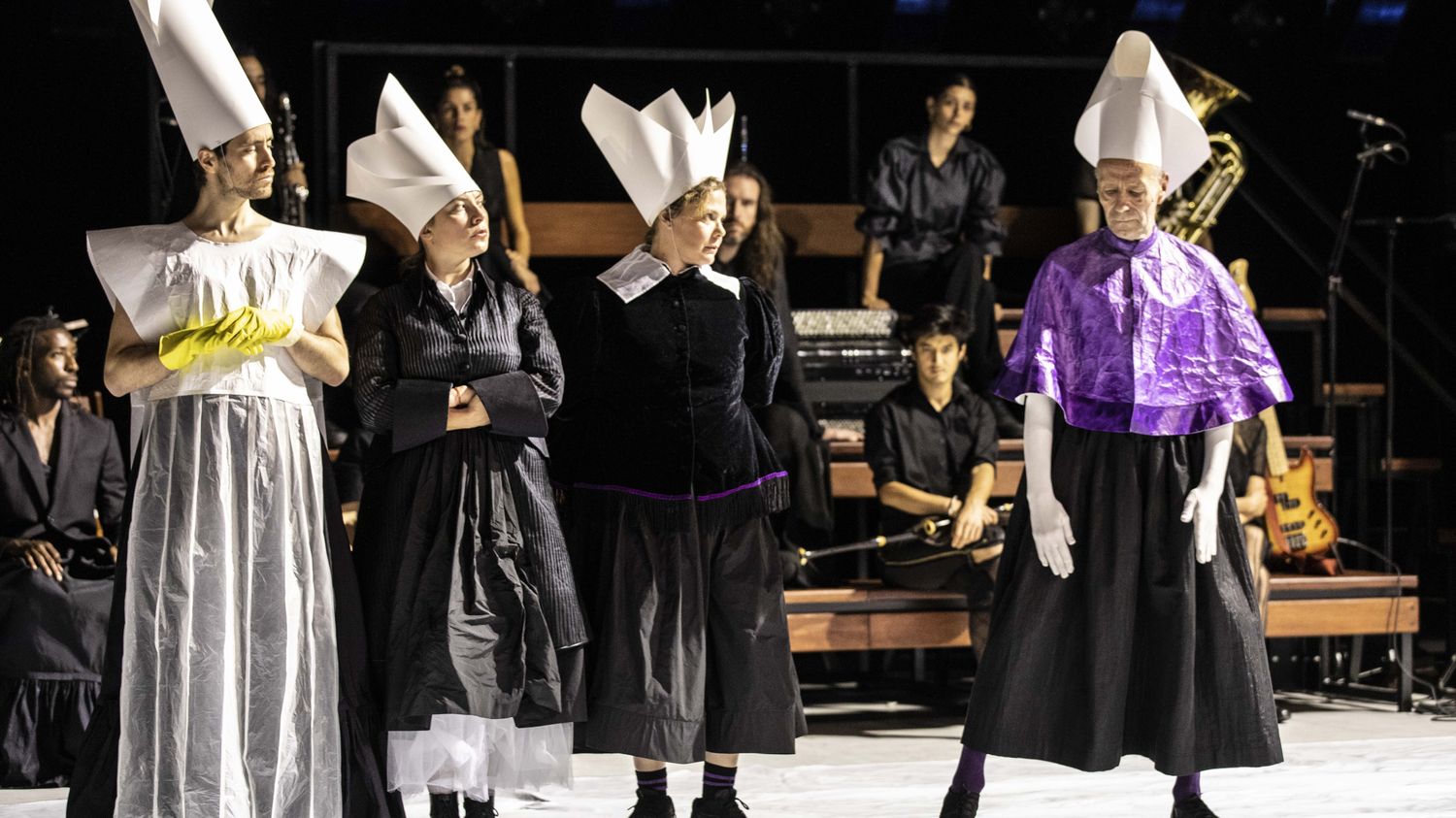Maëlle Dequiedt and Simon-Pierre Bestion have taken the text and music of Domenico Scarlatti’s “Stabat Mater” to give it a resolutely contemporary tone. By freeing themselves from religion, they give another dimension to the sacred. Heart stroke.
It’s not a show to summarize, but an experience to live. The purists of Stabat Mater by Domenico Scarlatti will be completely confused by this new version by Maëlle Dequiedt. The others, all the others, will find food for emotion and reflection. The director has literally freed herself from codes and contexts to create a very original work. This often overused adjective takes on its full meaning here. From the first scene – the piece has nine – the tone is set: fantasy, burlesque, delirium, anachronism, humor and transgression (all in the plural). Four cardinals, played by two men and two women, are in conclave to appoint a pope from among them. An epic fight takes place under the surprised eyes of spectators. And to the new pope to implore Our Lady of Seven Sorrows. And thus to overcome his adversaries with a thousand scourges, plunging them into excruciating pain.
Stabat Mater is a religious text from the Middle Ages, attributed to the Franciscan poet Jacopone da Todi. It begins like this: “She stood in pain near the cross, in tears, while her Son hung.” The mother who stood, “Stabat Mater dolorosa”, is Mary who helplessly witnesses the suffering of her son on the Cross. The text has been set to music many times, but Domenico Scarlatti’s composition is surely one of the most famous. Born October 26, 1685 in Naples and died July 23, 1757 in Madrid, Giuseppe Domenico Scarlatti was a Baroque composer and virtuoso harpsichordist who spent the first part of his life in the shadow of his father, Alessandro, a very renowned and principal musician. promoter of Neapolitan opera. THE Stabat Mater would be a commission from the Vatican for Saint Peter’s Basilica.
Maëlle Dequiedt and Simon-Pierre Bestion, musical direction, took on the text and music of the Stabat Mater to give it a resolutely contemporary tone. Result: a sort of euphoric baroque-rock opera. “I discovered this Stabat Mater at the time when I was assistant conductor and harpsichordist of a baroque ensemble. We had worked on the work for almost a year, which gave me plenty of time to tame him, to develop a relationship with him that is both deep and free”, remembers Simon-Pierre Bestion.

The common thread of this show could be the role of the mother over the centuries, a mirror held up to current society with all the problems that affect it. THE Stabat Mater, version Maëlle Dequiedt-Simon-Pierre Bestion, dedicates life with assumed creative freedom. Full and complete. By freeing themselves from religion, they give another dimension to the sacred. A show that breaks free from genres and codes. With a scenography full of ingenuity and discoveries, artists and musicians gifted in singing, acting and dancing. Special mention to Frédéric Leidgens who brings a touch of sweet madness, incredibly moving. This Stabat Mater is an invitation to a dreamlike and flamboyant journey. Big crush.
Form
According to : Domenico Scarlatti
Collective creation: The Phenomena and The Storm
Staging: Maëlle Dequiedt
Musical direction and arrangements: Simon-Pierre Bestion
Dramaturgy: Simon Hatab
Scenography: Heidi Folliet
Suits: Solène Fourt
Lights: Auréliane Pazzaglia
Choreography: Olga Dukhovnaya
General management / stage: Jori Desq
Her : Mateo Esnault
Assistant director: Clara Chabalier
Costume assistant : Salomé Vandendriessche
Distribution : Youssouf Abi-Ayad, Emilie Incerti Formentini, Frédéric Leidgens, Maud Pougeoise
Duration : 1h30
Place : Théâtre des Bouffes du Nord, 37 bis boulevard de la Chapelle, 75010 Paris
Dates: Until October 28
